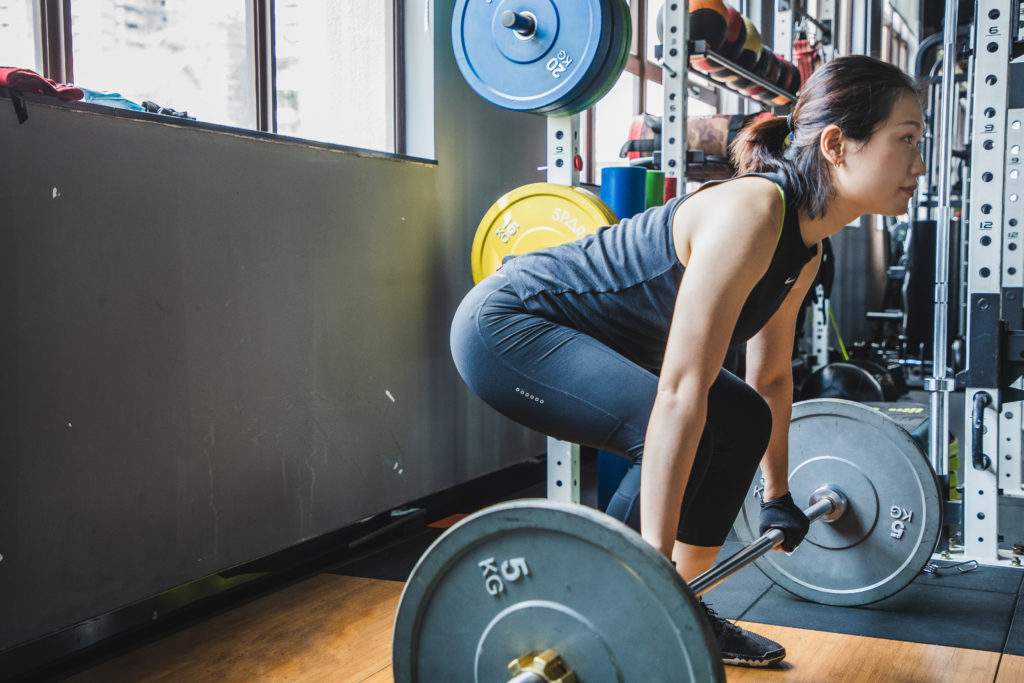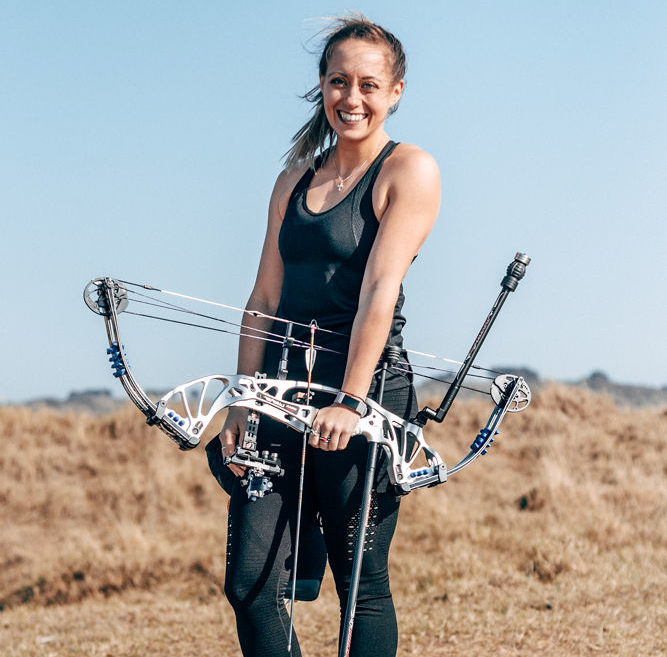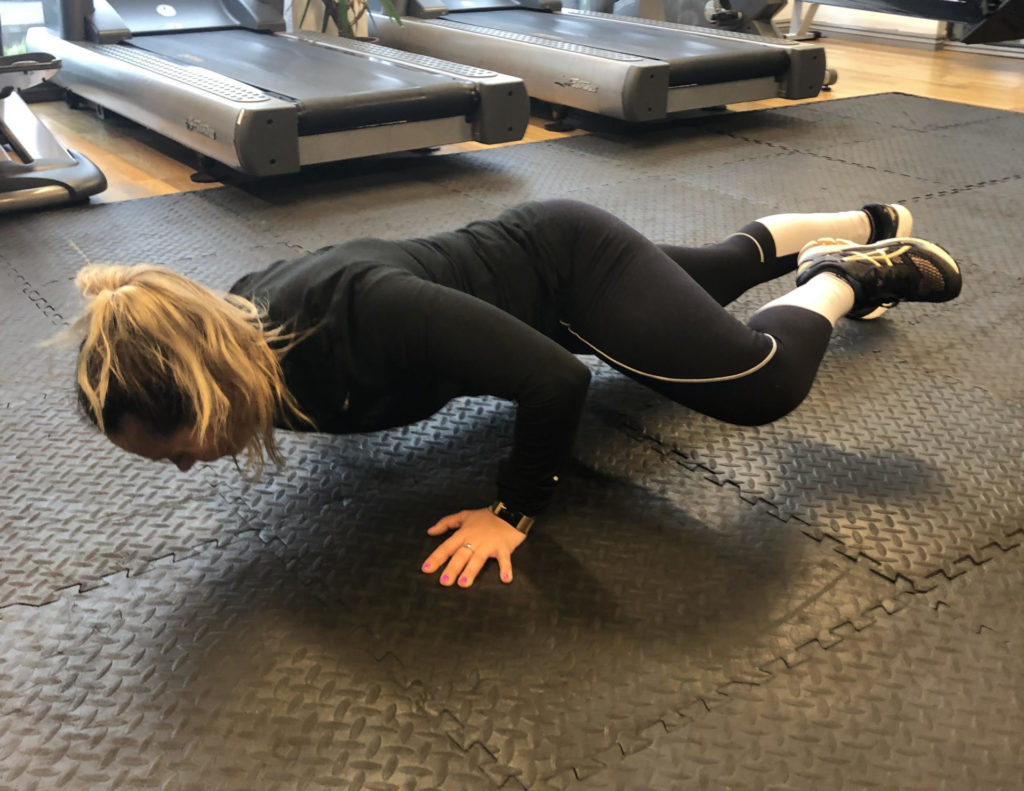Lucy O’Sullivan looks at an important training question for serious archers
The question I get asked most often by archers across the world is “When should I shoot, and when should I physically train?”
Annoyingly, the most accurate answer is that it is totally up to the individual and their personal goals. For example: this year I wanted to lose some weight slowly and steadily, after the pandemic stress, so I set up an initiative with my business @StrengthbyLucy to be active every day.
I make sure I move every day be it a run, a walk, a cycle or getting my muscles pumping in the gym. This is great for fat loss, but not so good for focused archery performance. So I also have to train as an archer, ideally four times a week.
If I was a full-time archer (and for most of us, that means while also having a full-time or part-time job) you have to shoot long sessions five or six days a week, and the gym, yoga, cycling, swimming and running come second.
Most of us know that training, in the gym for example, will increase longevity in the sport and bring other benefits too; making yourself a fitter, healthier, injury-free human is always worth doing. So to help you a little bit, and this will be different for everyone based on their goals, we can split the year up into seasons.
Off Season — time to train HARD (but sensibly!)
For both archery and in the gym, the goal is volume and strength. My goals at the moment after the last GB shoot of the outdoor season are: to increase my arrow volume as much as possible; put on some bulk around my shoulders; ensure I’m doing some anti-injury exercises and get as strong as possible in my lower body and back muscles.
You want to be shooting as much as you can on blank boss for example, and also shooting rounds at your club. Remember that if you are training heavily in the gym, you will feel fatigued, so your score may not directly equate to any strength gains.
Off-season, in the gym you want to focus on strength. If you want some bulk with that, do reps of 10+, lifting as heavy as you can. If you want maximal strength do reps of five, lifting heavy. If you are off-season and really going for it, you can do anything from 3-7 sets, including warm-up sets.
Needless to say, it’s essential to work up slowly to lifting as heavy as possible — don’t start straight away at the heaviest weight possible, just as you wouldn’t start a child on a 60lb bow.
A good way of staying injury-free while lifting weights is to ‘leave one rep in the bank’. For example, if I want to be able to perform a 70kg squat for 10 reps, I should probably be able to do a 70kg squat for 11 reps, so that I know I will be able to function and shoot the next day. If archery is your main sport you don’t want to be too tired to do it. However, if physique is your sport and archery is for fun, go for the heaviest thing you can lift safely and rest the next day.
With anti-injury exercises you want to aim for reps of 10+, to ensure you are bulking up potentially under-used muscles, and stretch off those tight muscles that you have used all season. Stretching at the gym is good, also doing yoga once or more a week is even better.
Pre-Season — time to train SMART
We have two seasons, indoor and outdoor, so it gets tricky with archery sometimes. In pre-season, you want to be as strong as possible but as technically good as possible. So now is the time to reduce gym sessions, perhaps doing two or three each week rather than five a week — AND shooting as many practice competition rounds as possible, with maybe one blank boss volume training session a week.
Pre-season at the gym again depends on your individual goals. If you still want more size, reps of 10+ are good but maybe drop down how many sets you do to 3-4 (with warm-up rounds) and if you wanted to, for example, up your poundage this year and wanted more maximal strength, reps of 3-5 with 3-4 sets (warm-up rounds included) so you are reducing central nervous system fatigue by doing less sets.
It’s a lot to fit in, so maybe focus more on the ‘more bang for your buck exercises’ like compound lifts: squats, chin-ups, bent over row, bench press and hip hinge exercises like Romanian deadlifts, with more focus going in-season on your back, and rotator cuff muscles. The focus is to getting your scores up at the club and using the gym to assist your healthy archery lifestyle.
In-Season — time to train SMARTER
If your goal is to be a better archer, archery must come first. If you have to choose between shooting at the range, getting some blank boss in or doing some bow technical stuff, pick that over the gym. You could always go for a run after your shooting practice, to reduce stress, increase how well your heart and lungs work, and train the lower body without causing stress on the upper body so you are fresh to shoot.
However, you do not want to loose the strength you gained over the off and pre-season, so strength work is also needed when you can, but you have to train smarter too. Fun fact — if you lift a one-rep max for a deadlift, it can cause central nervous system fatigue for up to three weeks. So never lift extra-heavy in-season without knowing there will be a cost to your CNS. If you are travelling lots for competitions that also puts a strain on the nervous system, so always factor in more recovery days in-season too.
In-season I suggest doing gym reps of 6-10 so you are building strength, not necessarily bulk at this time of year, and keep the sets low of 3-4 (with warm-up rounds) so that you can still maintain your strength and not cause too much CNS fatigue for shooting.
If I want to gym train the week of a competition, I will tend to do lower body days only, so my chest, back and shoulders are ready to compete, but I also do upper body anti-injury work. Of course throughout the season anti-injury exercises are going to be what keeps you in the sport, but they can often be done at the beginning or end of an archery or gym session.
For example, the well-known rotator-cuff exercise ‘external rotations’ can be done at the archery range all year round with a stretch band before or after shooting, or in the gym all year with a cable or weight. But off-season you could go heavier with the weights, and in-season keep the focus on technique.
There are so many ways to train, but if archery is your primary sport, goal and focus in-season, then archery should always be the main thing you do in the week. Everything else is to assist that goal!




